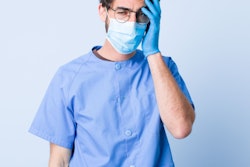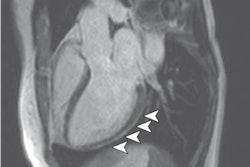
The second wave of COVID-19 cases could be far worse than the first wave, according to the experience of the largest hospital in Singapore. Healthcare facilities should prepare now to cope with a continuing influx of new cases, Dr. Lionel Cheng said at a 19 June RSNA webinar.
The initial COVID-19 wave was fairly small in Singapore because the country had a very good response on a national level, said Cheng, who is director of clinical operations at the division of radiological sciences at Singapore General Hospital.
However, the second wave was "like a slow tsunami making its way toward us."
The 1,785-bed hospital managed multiple, almost chaotic, moving pieces to adapt to the new caseload not only on its own but in a coordinated effort across the whole country, he added. As of 14 June, the regional health system has treated more than 5,000 COVID-19 cases.
A potential strategy to prepare for the next wave includes three parts: build, adapt, and sustain.
Even if a healthcare facility doesn't currently need increased capacity in terms of space and other resources, it should still be prepared for the future, Cheng said. Examples of increased capacity include expanding the site's physical footprint, borrowing or buying new equipment, increasing staffing, extending hours, and creating new workflows.
At Singapore General Hospital, the 2002 severe acute respiratory syndrome (SARS) epidemic left "deep scars" that shaped planning and development, which allowed the hospital to respond quickly to COVID-19. For instance, after SARS, a multistory parking garage was built that could be used as a fever screening area. Within the parking garage are lead-lined rooms where chest x-ray services could be carried out, and that's exactly what they were used for once COVID-19 hit.
Previous experience is part of what led the hospital to be able to adapt to the pandemic. It had already increased its physical footprint, but it also reconfigured its space -- the parking garage being an example. Other ways to adapt include adjusting equipment use, staff embracing new roles, and flexibility with time.
For instance, CT downtime per case went from about five hours to 1.5 hours, with the intention of reducing it even more. There's also a new normal at the hospital -- staff rest areas have tables and chairs spaced further apart and plastic barriers between table seats that are closer together.
The third part of the hospital's strategy is sustainability -- COVID-19 should be thought of as a marathon, not a sprint. With that in mind, how can supplies be preserved? How can staff burnout be prevented? Are there tweaks to make processes simpler and more efficient?
At Cheng's institution, they categorized wards by risk level and adjusted personal protection equipment (PPE) accordingly -- low-risk wards require a surgical mask and gloves, but no eye protection, whereas high-risk wards require an N95 mask, goggles, a protection gown, and gloves.
Singapore General Hospital's strategy might not work for everyone, but everyone should use this current lull to plan ahead for the next wave, he concluded.



















